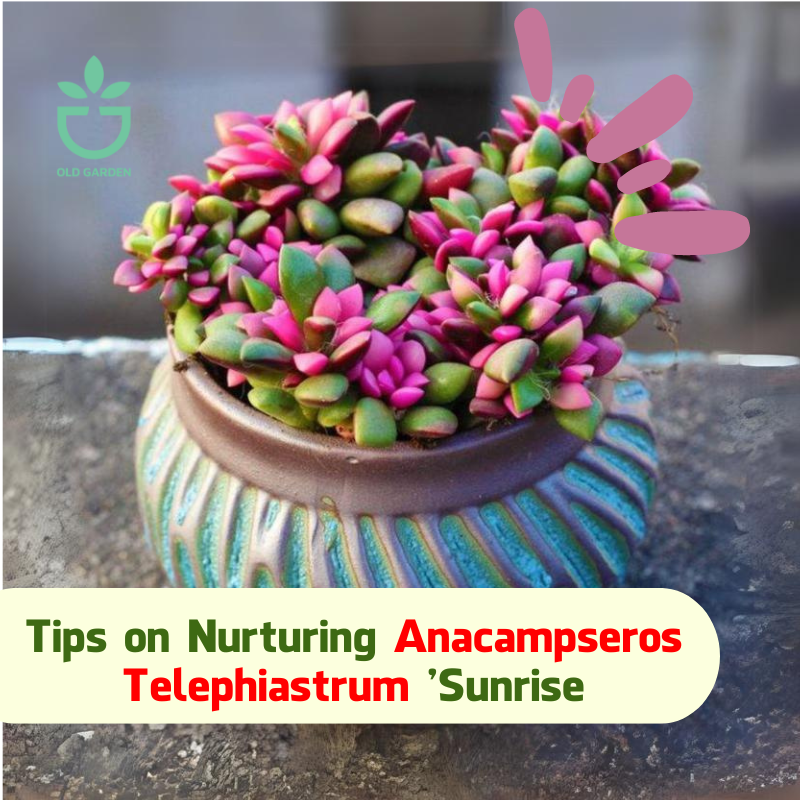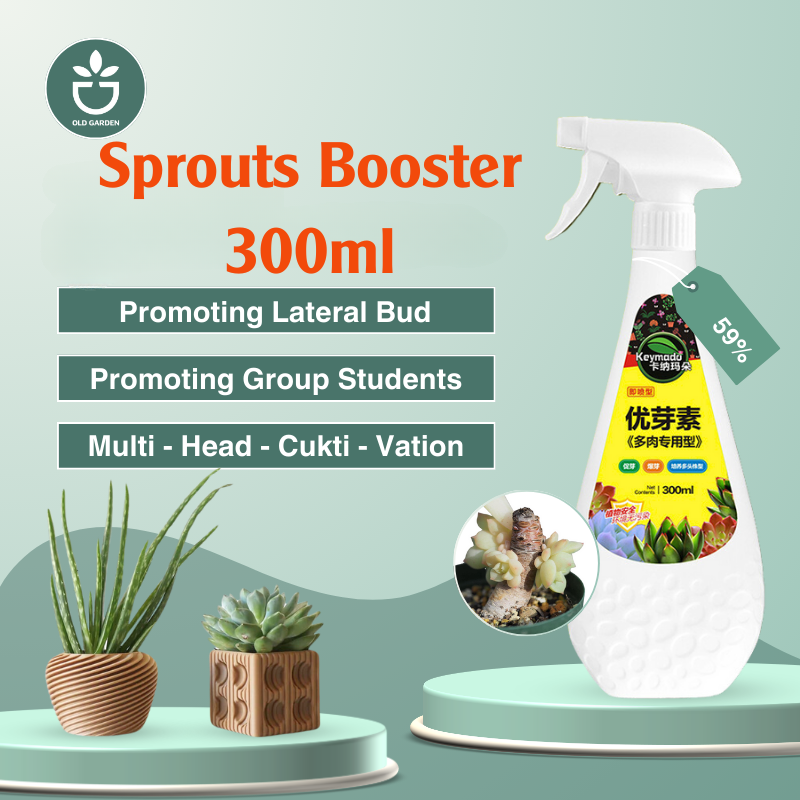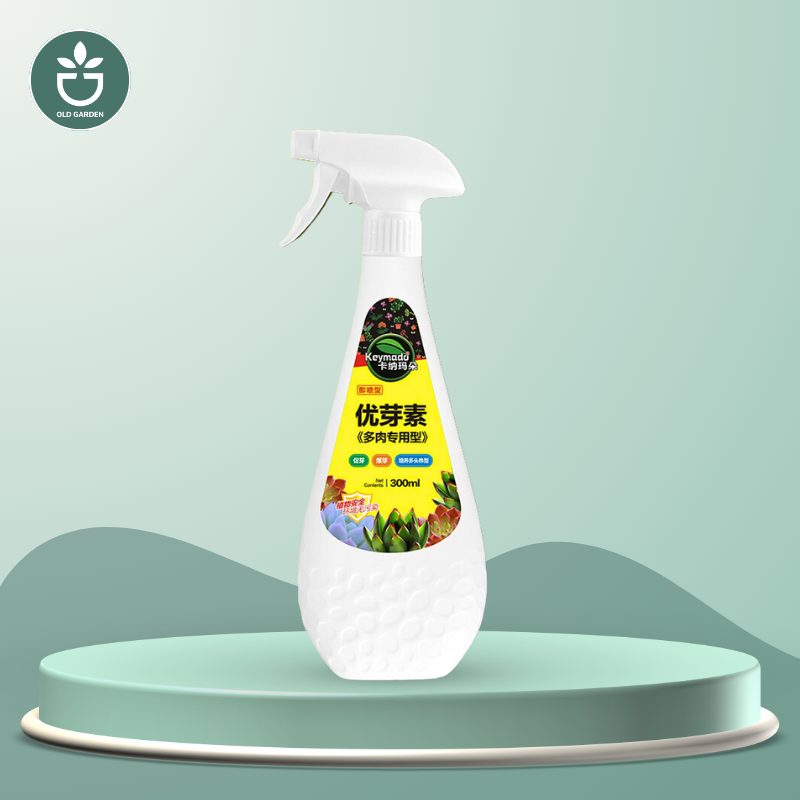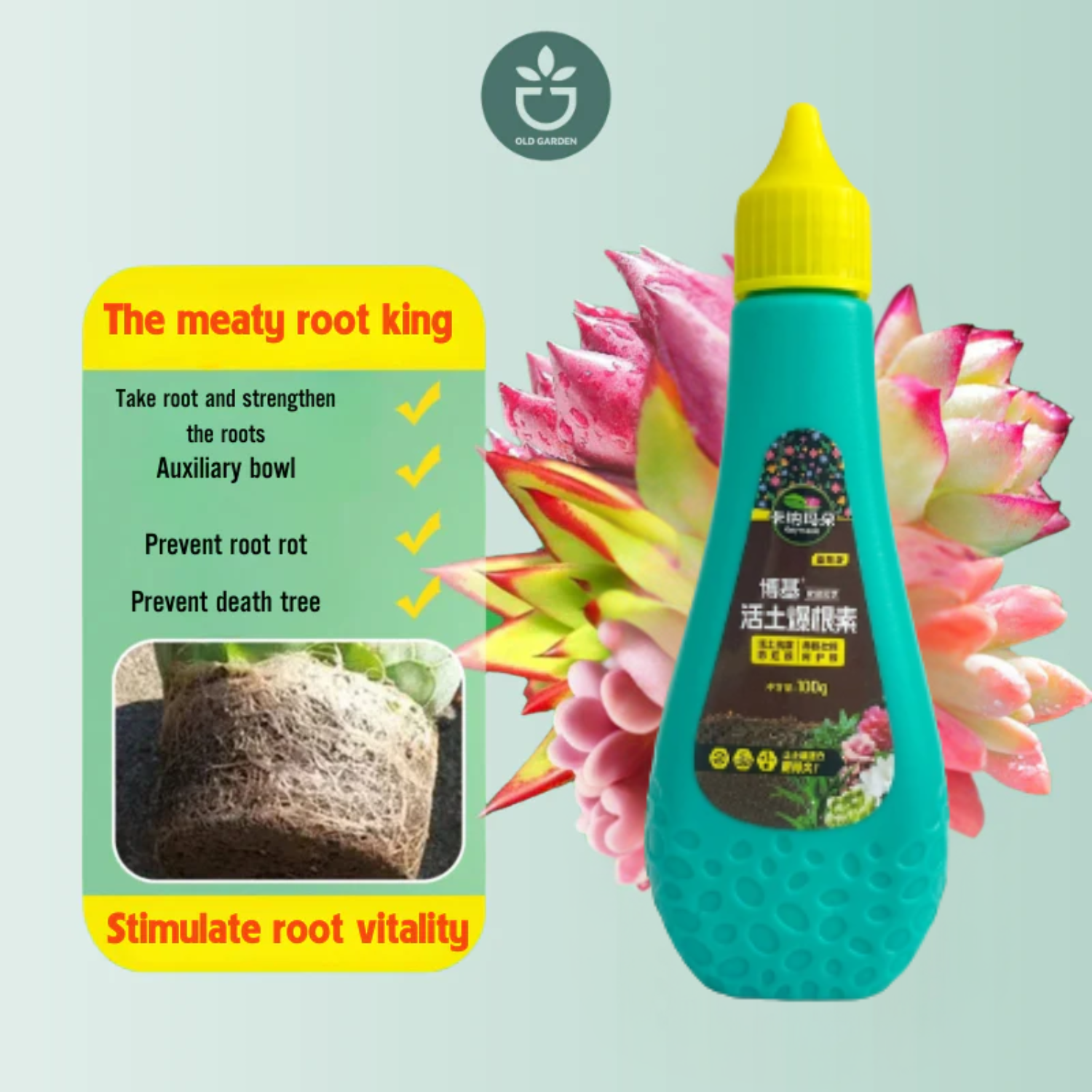The growth pattern of Anacampseros Telephiastrum is distinctive and charming. It forms low-spreading rosettes comprised of densely clustered, chubby leaves radiating from the center. This rosette formation adds to its allure, complementing the vibrant foliage. Additionally, although inconspicuous, this plant may produce small flowers, further enhancing its beauty.
The 'Sunrise' succulent is characterized by its compact and slow-growing nature. Its petite size and manageable growth make it an ideal option for tabletops, cramped areas, and windowsills. This succulent's visual charm and versatility render it perfectly suited for contemporary living, effortlessly integrating into bustling lifestyles. Its low-maintenance requirements alleviate the need for constant upkeep, while its vibrant colors effortlessly enhance any environment with a touch of natural elegance. Consequently, it remains a favored selection among individuals seeking to adorn their spaces with botanical beauty, particularly those with limited time and space for plant maintenance.
LIGHTING
Anacampseros Telephiastrum 'Sunrise' succulent flourishes in bright, indirect light, necessitating a minimum of 5-6 hours of illumination daily. Optimal placement involves positioning it near a south or west-facing window, where it can bask in filtered sunlight or the gentle morning rays. For indoor cultivation, ensuring ample natural light exposure or supplementing with grow lights is essential to sustain its vibrant hues and robust growth.
Although this succulent may exhibit more vivid colors when subjected to direct sunlight, safeguarding it from prolonged and intense sun exposure is paramount. Extended periods of direct sunlight can result in sunburn, inflicting damage to the delicate leaves. Striking a delicate balance, providing bright, indirect light or filtered sunlight is advisable to preserve the plant's striking pigmentation without jeopardizing its well-being. In sunnier climates, it may be necessary to shield the plant from direct sunlight during peak hours by utilizing sheer curtains or strategically placing it where it receives morning or evening sun. Should you observe any color fading, gradually acclimate the plant to increased sunlight exposure while diligently monitoring for signs of stress and adjusting accordingly.
WATERING
The Anacampseros Telephiastrum 'Sunrise' succulent requires moderate watering. It's important to allow the soil to partially dry out between watering sessions to prevent overwatering. When watering, ensure that the soil is thoroughly moistened but not saturated, as excessive moisture can lead to root rot, harming the plant. To determine when to water, regularly check the soil moisture by inserting a finger into the soil; if it feels dry to the touch, it's time to water. It's advisable to err on the side of underwatering rather than overwatering to avoid potential issues.
Adjusting the watering frequency according to environmental conditions, such as the season and humidity levels, is crucial. During the active growing season (spring and summer), you may need to water more frequently, whereas in the dormant period (fall and winter), reducing the watering frequency is recommended. Always assess the soil moisture before watering again to prevent overhydration. Additionally, using only room-temperature distilled water or rainwater is recommended to avoid temperature shock to the plant.
SOIL AND FERTILIZER
Anacampseros Telephiastrum 'Sunrise' prefers well-draining soil, similar to the mix commonly used for succulents. A combination of cactus mix with perlite or sand ensures adequate drainage, preventing water accumulation around the roots and avoiding issues like root rot. The key is to use soil that facilitates rapid water passage while discouraging waterlogging, maintaining proper aeration and porosity to allow air to reach the roots and enhance drainage. It's important to steer clear of potting mixes that are overly dense or retain excess water, as these conditions can promote root rot.
Like most succulents, Anacampseros Telephiastrum 'Sunrise' thrives in nutrient-poor soil and doesn’t require high levels of fertilization. For those wishing to promote growth, a diluted application of a balanced, water-soluble fertilizer once a month during the growing season in spring and summer is recommended. However, over-fertilizing can result in root burn and weaken the plant. Always adhere to the recommended guidelines for the chosen fertilizer and adjust according to the specific needs of your Anacampseros Telephiastrum.
TEMPERATURE AND HUMIDITY
Anacampseros Telephiastrum 'Sunrise' thrives in warm and dry environments, making it well-suited for indoor conditions with temperatures ranging from 65°F to 80°F. While it flourishes in hot and sunny climates, it is not tolerant of cold temperatures and should be protected from freezing conditions and temperatures below 30°F. If grown in colder regions, providing adequate shelter or bringing them indoors during winter months is advisable to prevent potential frost damage.
Regarding humidity preferences, Anacampseros Telephiastrum 'Sunrise' prefers lower humidity levels (30-40%), although it can still thrive in most indoor settings. High humidity can increase the risk of fungal diseases and other issues, underscoring the importance of maintaining well-ventilated rooms to prevent excessively humid conditions.
POTTING AND REPOTTING
When potting your Anacampseros Telephiastrum 'Sunrise', start by selecting a well-draining container with drainage holes. We recommend pots made from a porous material like cement, ceramic or terracotta to enhance drainage and aeration. Plant your succulent in the center of the container, spreading the roots evenly and burying them slightly in the soil. After potting, water the succulent lightly and allow the soil to dry out between watering to prevent overhydration.
Repotting is necessary when the succulent outgrows its current container or when the soil becomes depleted of nutrients. Newly-bought succulents that comes in nursing pots may also need repotting. During repotting, carefully remove the plant from its current container and inspect the roots. Trim any dead or rotting roots using clean, sharp scissors or pruning shears. Choose a slightly larger container with drainage holes for the repotting process, ensuring it provides enough space for the succulent to grow. Prepare fresh succulent or cactus mix for the new container, ensuring it is well-draining.
To repot, first, lift your succulent from its old container and place it in the center of the new one. Add the fresh soil mix around the roots, pressing it down gently. Water your plant lightly after repotting and allow the soil to settle. Avoid exposing the freshly repotted plant to direct sunlight for a few days to minimize stress. Repotting helps refresh the soil, provides more space for growth, and allows for an overall health check of the plant. Always handle your Anacampseros Telephiastrum 'Sunrise' with care during the potting and repotting processes to avoid damage to the delicate leaves and stems.
PRUNING
Similar to many succulents, Anacampseros Telephiastrum 'Sunrise' typically doesn't require frequent pruning. While these plants naturally maintain a compact and low-growing form, occasional pruning can encourage denser growth and prevent legginess. Employ clean, sharp scissors or pruning shears to trim away any dead, damaged, or excessively grown sections of the plant.
Begin by examining the plant for any discolored or desiccated leaves, as well as elongated or sparse stems. Delicately snip these away at the stem's base to stimulate fresh growth. Moreover, the removal of spent or withered flowers can redirect the plant's energy towards producing new blossoms. When pruning, ensure precise cuts to minimize the risk of infection or disease. It's imperative to sterilize your tools before use, particularly if the pruning involves removing any compromised portions.
PROPAGATION Anacampseros Telephiastrum 'Sunrise' succulents offer multiple propagation methods, allowing enthusiasts to expand their collection and share the plant's beauty. Here are common techniques for propagating these succulents:
- Stem Cuttings: Stem cutting is the simplest propagation method for Anacampseros Telephiastrum. Select a healthy stem with at least one attached leaf. Let the cut end dry and form a callus before planting it in well-draining soil. Water sparingly until roots develop.
- Offsets: Propagation can also be achieved through offsets or "pups," which are small plants growing at the base of the parent succulent. Gently separate these offsets from the main plant using clean scissors or pruning shears. Allow the cut ends to dry and form a callus for a day or two before planting them in a suitable succulent mix.
- Leaf Cuttings: Another option is propagating from individual leaves. Carefully remove a healthy leaf from the parent plant, ensuring a clean break. Let the cut end air dry and callus for a day or two. Plant the dried end in a succulent-friendly soil mix, burying it slightly, and water sparingly until roots and a new plantlet emerge.
COMMON ISSUES
While Anacampseros Telephiastrum is generally resilient, it can encounter various challenges like any other plant.
- Overwatering: Excessive moisture is a common issue, leading to root rot. Ensure the soil drains well and allow it to dry out between waterings, while also ensuring the pot has adequate drainage.
- Underwatering: Despite its drought tolerance, Anacampseros Telephiastrum 'Sunrise' requires regular watering. If the leaves begin to shrivel or wrinkle, it may signal underwatering. Adjust your watering schedule accordingly.
- Sunburn: Intense, direct sunlight, particularly during peak hours, can cause sunburn. Gradually introduce the succulent to sunlight to prevent this issue, and if sunburn occurs, relocate it to a partially shaded area.
- Pests: Common pests like aphids, mealybugs, or spider mites can infest the plant. Regularly inspect the leaves and promptly address any infestations with insecticidal soap or neem oil, which are effective treatments that won't harm the succulent.
- Yellowing Leaves: Yellow leaves may indicate overwatering, underwatering, or nutrient deficiencies. Review your watering practices and consider feeding the plant with a balanced, diluted succulent fertilizer during the growing season.
- Root Rot: Excessive soil moisture can lead to root rot. Ensure proper drainage in the pot and consider repotting if root rot is suspected. Trim affected roots and allow the plant to dry before repotting.
- Disease: Fungal diseases can thrive in overly damp conditions. Maintain adequate airflow and avoid overcrowding around the plant. If signs of disease appear, remove affected areas and apply fungicide if necessary.
Anacampseros Telephiastrum 'Sunrise' is widely considered to be non-toxic to both humans and pets. While there is no documented evidence of its toxicity, it is always prudent to exercise caution when dealing with any plant, especially around children and pets.
To minimize any potential risks, it is advisable to keep the succulent out of reach of curious little ones and inquisitive animals. If you observe any signs of irritation or discomfort after handling the plant, such as redness, swelling, or itching, promptly rinse the affected area with clean water and seek medical attention if the symptoms persist. It is also recommended to thoroughly wash your hands after handling the plant to eliminate any residue that might cause discomfort if ingested. If you or your pet experiences any discomfort after interacting with the succulent, promptly wash the affected area with water and consult a healthcare professional if the symptoms persist.





